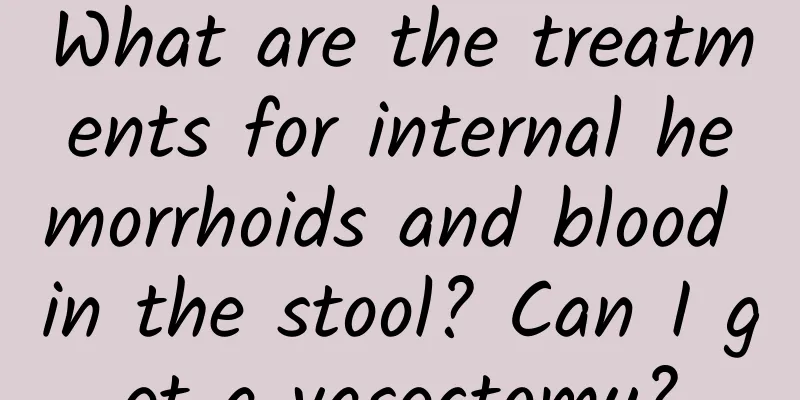Nasal polyps

|
Nasal polyps are a common type of polyp disease. Nasal polyps mainly occur in adults, are quite harmful, and have a variety of causative factors. When you find symptoms of suspected nasal polyps, you should go to the hospital for examination in time. Although most of them are benign, a small number are malignant. You must take them seriously and take active precautions to avoid greater harm. Causes 1. Middle nasal meatus microenvironment theory The microenvironment of the middle nasal meatus is narrow and uneven, and the inhaled airflow is easily turbulent here; the ciliary function is weakened and the ciliary activity is impaired; the blood flow of the middle nasal meatus mucosa is significantly reduced compared with other parts of the nose. The natural defense function of the middle nasal cavity is weakened, and the local area is susceptible to damage by harmful factors, creating conditions for the formation of nasal polyps. 2. Nasal allergy A large number of mast cells, eosinophils and IgE-producing cells can be found in nasal polyp tissue, and the IgE level in the fluid is increased, suggesting that local allergy has a certain role. 3. Eosinophilic inflammation Nearly 90% of nasal polyp tissues have a large number of eosinophil infiltrations, suggesting that nasal polyps are closely related to the increase of these cells. 4. Bacterial superantigen theory Staphylococcus aureus is one of the common symbiotic bacteria in the nasal cavity. Staphylococcus aureus enterotoxin can directly activate a large number of Th2 cells, B cells, eosinophils and mast cells in the nasal mucosa of the middle nasal meatus, causing them to synthesize and release a large number of proinflammatory cytokines, aggravating the local inflammatory response in the middle nasal meatus and promoting the formation of polyps. 5. Genetics The pathogenesis of nasal polyps is still unclear, but some reports suggest that genetic factors may play a potential role. Nasal polyps are usually familial, suggesting that genetic or environmental factors may play a role in the occurrence of nasal polyps. Clinical manifestations Nasal polyps are more common on both sides and less common on one side. A common symptom is persistent nasal congestion, which worsens as the polyp grows. The nasal secretions increase, sometimes accompanied by sneezing. The secretions may be serous or mucous. If there is a concurrent sinus infection, the secretions may be purulent. Many people have olfactory impairment. People with severe nasal congestion speak with a nasal voice and snore during sleep. People with long polyp pedicles may feel something moving in their nasal cavity with breathing. Posterior nasal polyps can make it difficult to breathe through the nose. If the polyps block the opening of the Eustachian tube, it can cause tinnitus and hearing loss. Polyps block sinus drainage and can cause sinusitis, causing patients to experience pain and discomfort in the nasal dorsum, forehead, and cheeks. treat 1. Small polyps can be controlled in growth through medication. 2. For those who fail to respond to drug treatment, functional endoscopic nasal sinus surgery should be performed. The effect of functional endoscopic surgery is better than that of nasal polypectomy. 3. Multiple or recurrent polyps are treated with conventional surgery. |
Recommend
Will the blood clots go away automatically?
When you accidentally get hurt by collision, impa...
The effect of maca tablets on women
For women, it is beneficial to eat some maca shee...
Hiccups, heartburn, acid reflux
Patients with stomach problems often experience s...
Sperm can kill bacteria and reduce inflammation
Sperm is an organic substance produced by the mal...
The best way to remove fat particles
There are many ways to remove fat particles. The ...
What is the reason for bitter taste in the mouth and bad breath? what to do?
Many people have experienced bad breath and bitte...
What to do if your child is stung by a wasp
Children are more naughty and mischievous. If par...
What is chest cramps?
Some diseases occur suddenly, while some occur ov...
How many years can you live with rectal pitting erosion?
In life, people are under pressure from life and ...
How to remove papule-type acne
Papular acne is a relatively common skin manifest...
The difference between Yin deficiency and Yang deficiency
According to traditional Chinese medicine, everyt...
Effects and functions of Sichuan Fritillary Bulbs stewed with orange
Orange is a common fruit, but Fritillaria cirrhos...
What are the symptoms of being bitten by a tick?
In recent years, incidents of tick bites have bee...
What causes a foreign body sensation in the throat?
I believe that many of my friends have experience...
Symptoms of cervical tuberculosis
Many people have not heard of cervical tuberculos...









